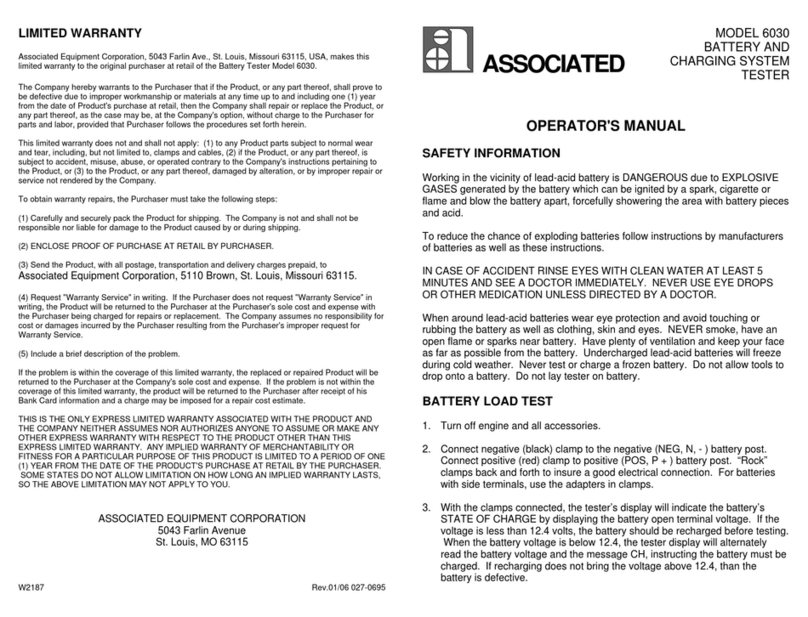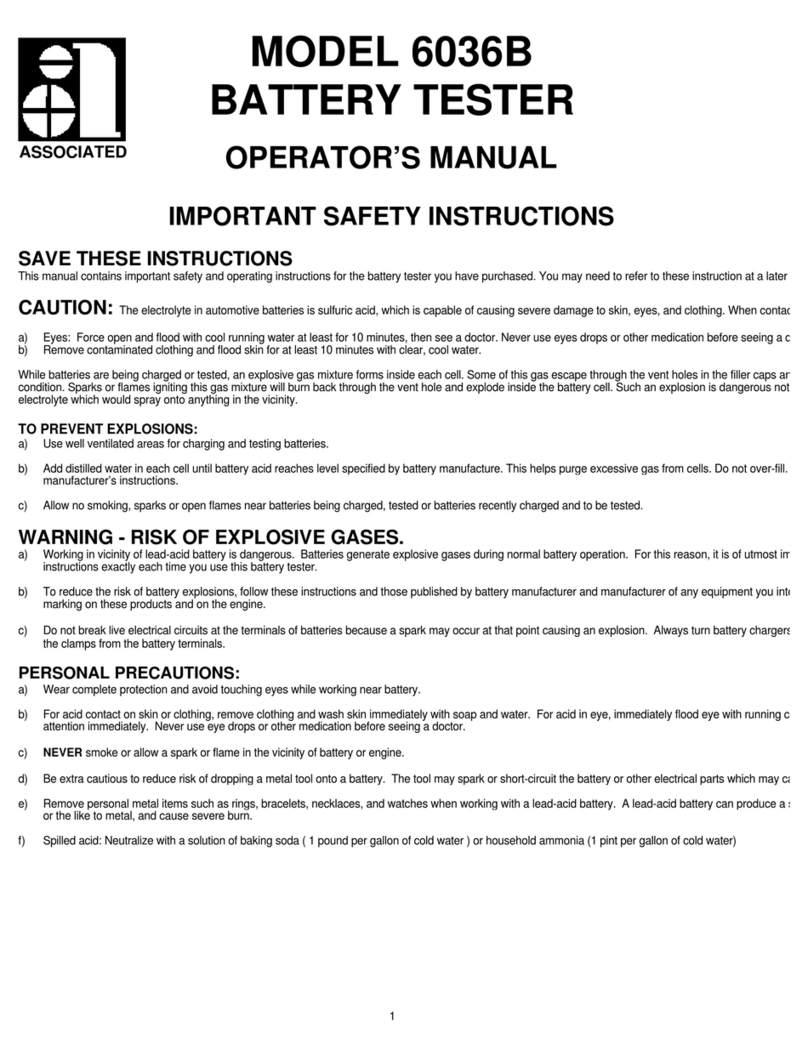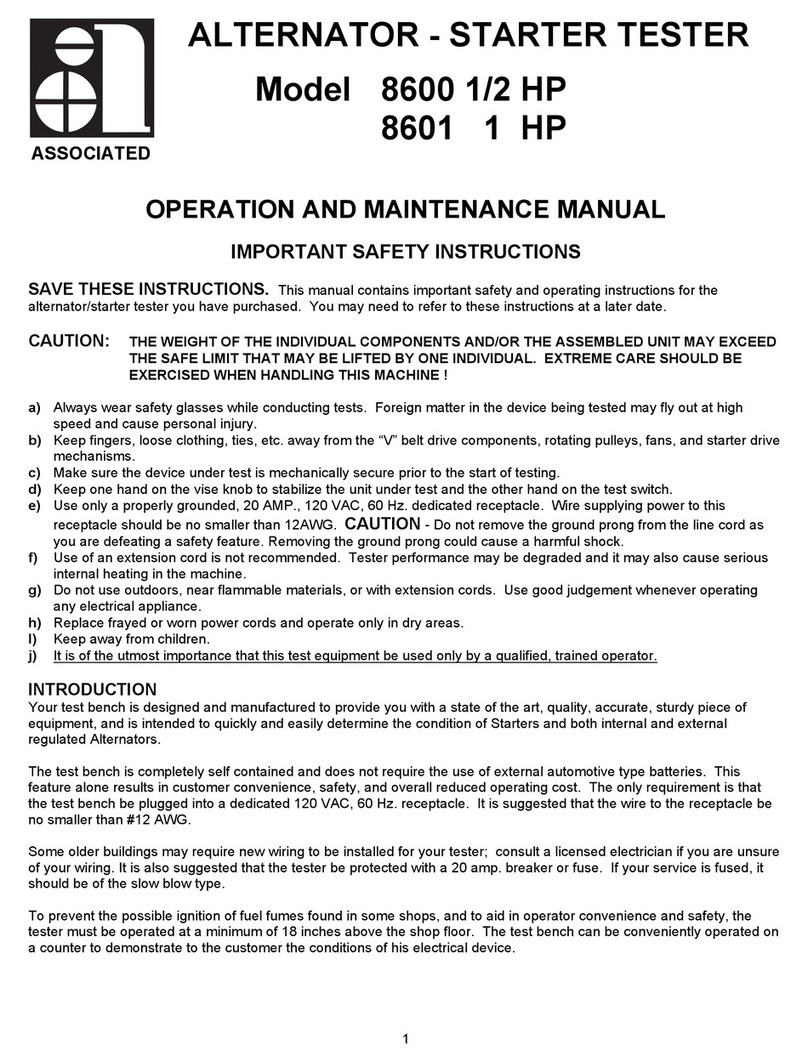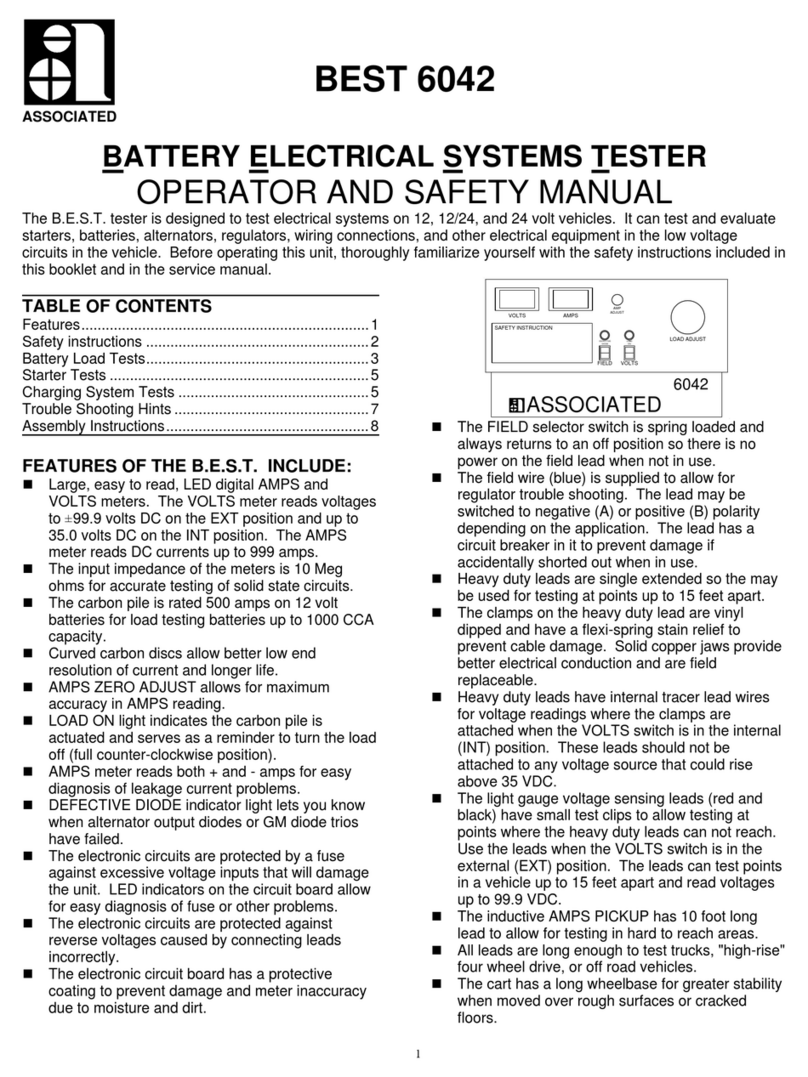
ASSOCIATED
Model 6039
Battery Tester
Operator's Manual
IMPORTANT SAFETY INSTRUCTIONS
1. SAVE THESE INSTRUCTIONS
This manual contains important safety and operating instructions for the battery tester model 6039. You may need
to refer to these instructions at a later date.
2. CAUTION – The electrolyte in automotive starting batteries is sulfuric acid. This acid is capable of causing
severe damage to skin, eyes, and clothing. If you come in contact with battery acid:
1. Remove contaminated clothing and flood skin for at least 10 minutes with clear, cool water.
2. Eyes: force open and flood with cool running water at least 10 minutes; then see a doctor. Never
use eye drops or other medication before seeing a doctor.
While batteries are being charged or tested, an explosive gas mixture forms inside each cell. Some of this gas
escapes through the vent holes in the filler caps and may remain around the battery in an explosive condition. Sparks
or flames igniting this gas mixture will burn back through the vent hole and explode inside the battery cell. Such an
explosion is dangerous not only because of its own force but also because of the acid electrolyte which would spray
over anything in the vicinity.
To Prevent Explosions:
1. Use well ventilated area for charging and testing batteries.
2. Add distilled water in each cell until battery acid reaches level specified by battery manufacturer. This helps
purge excessive gas from cells. Do not overfill. For a battery without cell caps, carefully follow manufacturer's
instructions.
3. Allow no smoking, sparks or open flames near batteries being charged or tested, or those recently charged or
tested.
3. WARNING - RISK OF EXPLOSIVE GASES.
a. WORKING IN VICINITY OF LEAD-ACID BATTERY IS DANGEROUS. BATTERIES GENERATE
EXPLOSIVE GASES DURING NORMAL BATTERY OPERATION. FOR THIS REASON, IT IS OF UTMOST
IMPORTANCE THAT EACH TIME BEFORE USING YOUR TESTER, YOU READ THIS MANUAL AND
FOLLOW THE INSTRUCTIONS EXACTLY.
b. To reduce risk of battery explosion, follow these instructions and those published by battery manufacturer and
manufacturer of any equipment you intend to use in vicinity of battery. Review cautionary marking on these
products and on the engine.
c. Do not break live electrical circuits at the terminals of batteries because a spark may occur at that point
causing an explosion. Always turn battery chargers or testers OFF before connecting or disconnecting the
clamps from the battery terminals.
4. PERSONAL PRECAUTIONS
a. Wear complete eye protection and clothing protection. Avoid touching eyes while working near battery.
b. If battery acid contacts skin or clothing, wash immediately with soap and water. If acid enters eye,
immediately flood eye with cold running water for at least 10 minutes and get medical attention immediately.
Never use drops or other medication before seeing a doctor.
c. NEVER smoke or allow a spark or flame in vicinity of battery or engine.
d. Be extra cautious to reduce risk of dropping a metal tool onto battery. It might spark or short circuit battery or
other electrical part that may cause explosion.
e. Remove personal metal items such as rings, bracelets, necklaces, and watches when working with a lead-acid
battery. A lead-acid battery can produce a short circuit current high enough to weld a ring or the like to metal,
causing severe burn.
f. Spilled acid: Neutralize with a solution of baking soda (1 pound per gallon of cold water) or household
ammonia (1 pint per gallon of cold water).



























